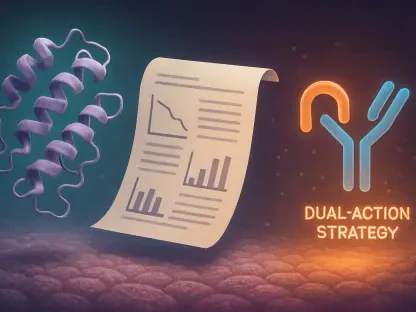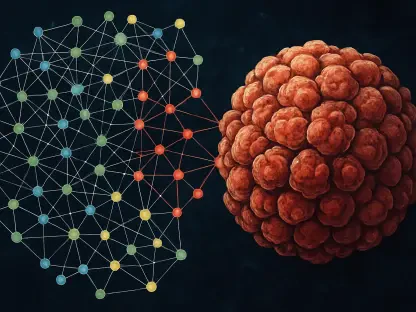The potential breakthrough in treating liver cirrhosis caused by metabolic dysfunction-associated steatohepatitis (MASH) has come from a recent study by Akero Therapeutics. Efruxifermin, an experimental drug, has shown significant promise in reversing liver damage in patients suffering from this prevalent liver condition, previously known as NASH. This promising development comes at a time when treatment options for MASH are extremely limited, giving hope to many patients and clinicians alike.
Effectiveness of Efruxifermin
Mid-Stage Clinical Study Results
Recent findings from mid-stage clinical trials have shown that efruxifermin is effective in significantly reversing liver damage in patients with MASH-induced cirrhosis, which is a monumental development given the limited treatment options available. In the study, 29% of patients receiving the highest dose of efruxifermin demonstrated improvement in liver scarring by at least one stage without any worsening of MASH symptoms. This is in stark contrast to the 12% improvement observed in the placebo group. Furthermore, of the patients who had liver biopsies before and after the treatment, an impressive 39% of those on the high dose showed notable improvement, compared to only 15% in the placebo group.
This breakthrough suggests that efruxifermin could be the first reported compound to successfully achieve such a reversal in cirrhosis caused by MASH during clinical testing. These results stand in sharp contrast to earlier outcomes reported in late 2023, when Akero experienced a significant setback after the initial 36-week treatment data did not meet the primary goal of the study. However, the more prolonged 96-week treatment period showed far more promising results, leading to a considerable reassessment of the drug’s potential, reigniting hopes among researchers and patients.
Market Reactions and Financial Gains
The positive results from the extended treatment duration led to significant financial gains for Akero Therapeutics, with the company’s shares doubling in value shortly after the announcement. This surge in market value also positively influenced stocks of its competitor, 89bio, which is developing a similar drug. The improved outcomes observed with the extended treatment period drew the attention of analysts, who noted the potential long-term benefits that efruxifermin could provide, further boosting investor confidence in the drug’s future prospects.
Secondary data supporting the main findings also highlighted the effectiveness of efruxifermin independent of other treatments, such as GLP-1 drugs. This isolation of efruxifermin’s therapeutic benefits underscores the drug’s efficacy, setting it apart from alternative treatments currently available. The study also observed that the responses of patients in the placebo group remained stable over time, reinforcing the validity of the benefits reported in the drug group. This stability in placebo responses effectively ruled out any skewing of the results due to fluctuating placebo effects, adding further credibility to the study’s findings.
Challenges and Side Effects
Common Adverse Effects
Despite the promising results, the study did not come without challenges, particularly in addressing the side effects associated with high doses of efruxifermin. Patients receiving the highest dose reported experiencing side effects such as diarrhea, nausea, increased appetite, and reduced bone mineral density. These adverse effects highlight the importance of closely monitoring patients and managing these symptoms to ensure the overall safety and well-being of individuals undergoing treatment with efruxifermin.
Interestingly, the reduction in bone mineral density observed in patients on the high dose was comparable to the reductions seen in diabetic patients using GLP-1 drugs. This finding helps mitigate concerns over the adverse effects of efruxifermin, suggesting that the reduction in bone density may be a manageable side effect, similar to that seen with existing treatments for other conditions. Nevertheless, the management of these side effects will be a crucial aspect of patient care as the drug undergoes further testing and potentially moves towards widespread clinical application.
Future Steps and Phase 3 Trials
Akero Therapeutics has unveiled a potential breakthrough in treating liver cirrhosis resulting from metabolic dysfunction-associated steatohepatitis (MASH) through their experimental drug, efruxifermin. This drug has demonstrated significant promise in reversing liver damage in patients afflicted by this increasingly common liver condition, which was formerly known as non-alcoholic steatohepatitis (NASH). The development of efruxifermin is particularly crucial given the scarcity of effective treatment options currently available for MASH. The study’s outcomes provide a glimmer of hope to many patients grappling with this severe liver condition, as well as to the clinicians who treat them. Additionally, liver cirrhosis associated with MASH has been rising in prevalence due to increasing metabolic syndromes, making this advancement even more timely. If further research continues to yield positive results, efruxifermin could potentially revolutionize the approach to treating MASH, significantly improving the quality of life for many individuals suffering from this damaging ailment.









